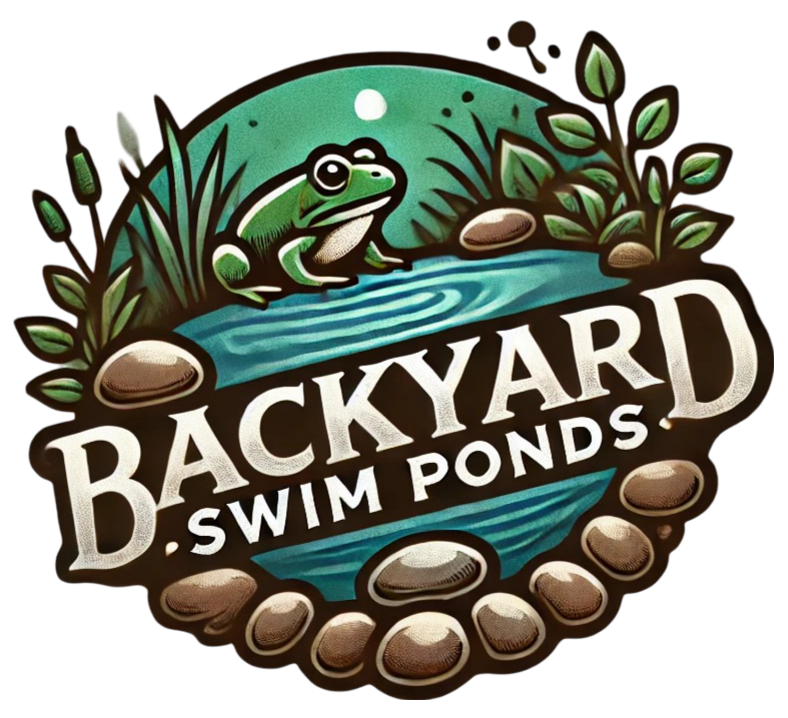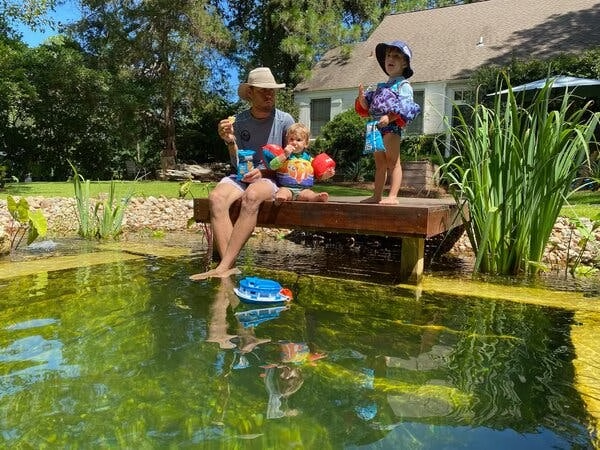Creating a captivating outdoor space around your swim pond enhances both its beauty and functionality. By integrating herb gardens and fruit trees along the perimeter, you can cultivate a landscape that is visually appealing while also serving practical purposes. This guide will provide you with insights into the best plants, effective design principles, seasonal maintenance routines, and real-life success stories. Each element is aimed at inspiring you to create your own stunning swim pond garden.
Why Blend Aesthetics with Functionality Around Your Swim Pond?
A natural swimming pond can serve as a serene retreat, but enhancing it with edible plants elevates the experience. Combining beauty and practicality transforms your pond area into a welcoming oasis that fulfills multiple needs. Edible plants—ranging from herbs to dwarf fruit trees—can thrive at the water’s edge, establishing a balance that is pleasing to the eye and supportive of local biodiversity.
Native and adaptive plant species naturally fit into their environment, ensuring a harmonious ecosystem while improving water quality. According to landscape designer Will Tomson, natural swimming ponds can serve various purposes, including agricultural irrigation and food production. Edible plants excel at absorbing excess nutrients, helping to maintain clarity and reduce reliance on chemicals.
By taking this approach, you create a sustainable garden that thrives in every season—a beautiful space that nurtures both your body and spirit.
Source: The New York Times
Choosing the Right Herbs for Your Swim Pond
Selecting the right herbs for planting along your swim pond is crucial for both aesthetics and practicality. Here are some top choices:
-
Water Mint (Mentha aquatica): This herb thrives in shallow waters or moist soil, offering a pleasant aroma and contributing to water purification.
-
Aquatic Mint: Similar to water mint, this herb is also suitable for murky edges and provides similar benefits.
-
Cress (Nasturtium officinale): This edible aquatic plant grows well in shallow areas of your pond, providing culinary benefits and enhancing water quality.
-
Celery (Apium nodiflorum): Grown in the regeneration zone, celery offers a fresh ingredient for your meals while also improving the pond’s ecology.
When planting these herbs, ensure they have access to adequate sunlight and are positioned away from swimming areas to minimize debris in the water. Regular harvesting will maximize the productivity of your herb garden.
Source: Reddit
Fruit Trees That Flourish Near Water—What You Need to Know
Incorporating fruit trees around your swim pond not only adds color and scent but also provides a source of fresh produce. Here are some excellent dwarf varieties:
-
Dwarf Citrus Trees: Trees like lemons and limes can thrive in pots, offering fragrant blossoms and delicious fruits without invasive roots.
-
Figs: Dwarf fig trees are low-maintenance and well-suited for container growth near water features.
-
Apple Trees: Varieties such as ‘Honeycrisp’ produce stunning blossoms and tasty fruits. Keep in mind that some winter protection may be necessary in colder climates.
When considering placement, ensure these trees are planted a safe distance from the water to avoid falling fruits, which might attract pests. Utilizing raised beds gives you better control over soil conditions and can enhance visual interest.
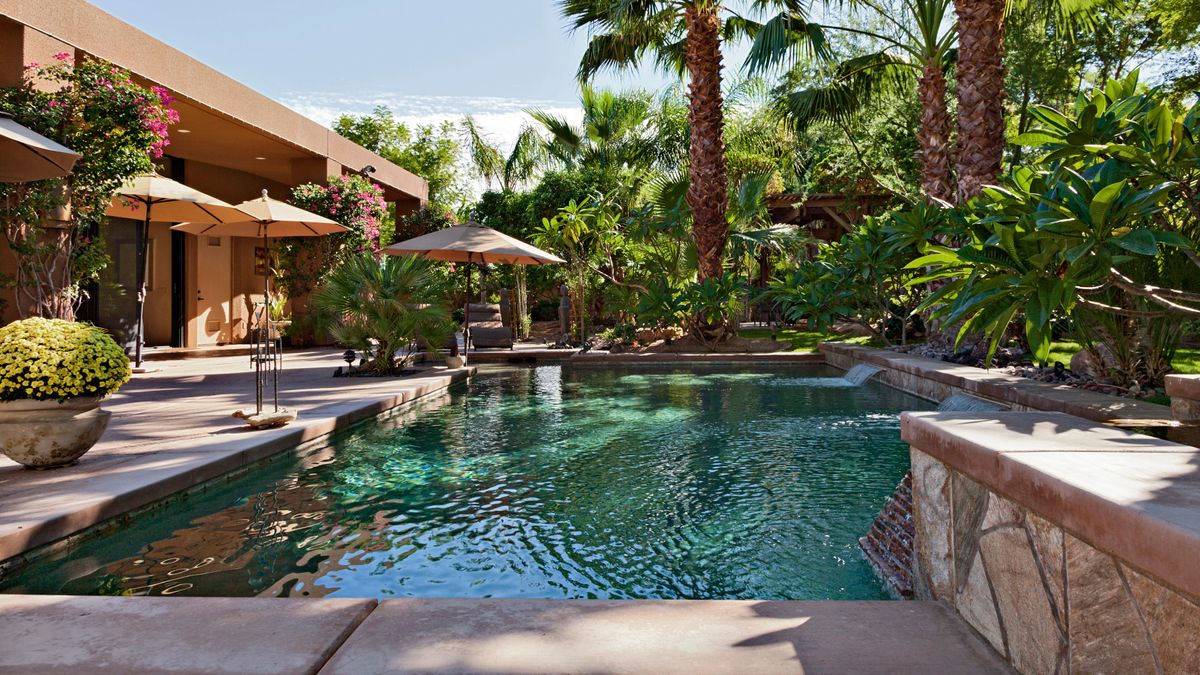
Source: Future Publishing
Smart Design Principles for Integrating Edible Plants
Designing a landscape with edible plants requires careful planning. Here are some essential principles to keep in mind:
-
Zoning: Clearly separate the swimming area from the regeneration zone where edible plants will reside. This separation helps keep the swimming zone clean and debris-free.
-
Plant Selection: Opt for perennial edible plants like watercress, celery, and strawberries, which thrive in the marginal environments around ponds.
-
Aesthetic Integration: Combine edible plants with ornamental varieties to create a lush, welcoming aesthetic. Raised beds can provide a structured appearance and better control over growing conditions.
-
Maintenance Considerations: Choose plants that are well-suited to your local climate to ease upkeep and minimize maintenance needs.
Design clear pathways for harvesting plants without disturbing the pond ecosystem, and avoid planting any species with thorns or sharp edges near swimming areas. This thoughtful design sets the foundation for a garden that is both beautiful and functional.
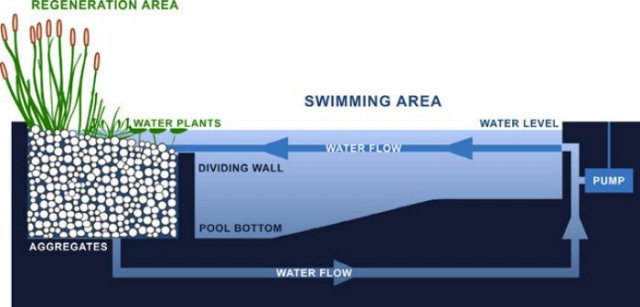
Source: Ecohome
The Role of Edible Plants in Water Filtration—How It Works
Edible plants play a significant role in maintaining high water quality in natural swimming ponds. Here’s how they contribute:
-
Nutrient Absorption: Plants like watercress and celery effectively absorb excess nutrients, helping keep the water clear while reducing the likelihood of algae growth.
-
Bacterial Reduction: Water mint possesses antibacterial properties that can eliminate harmful bacteria, contributing to safer swimming conditions.
-
Heavy Metal Removal: Plants such as water lilies can absorb heavy metals from the water, improving its overall safety.
-
Algae Control: By competing for nutrients and providing shade, edible plants limit algae development and maintain pond clarity.
Maintaining optimal pH levels and ensuring adequate water circulation are vital for effective filtration, supporting a thriving aquatic ecosystem.
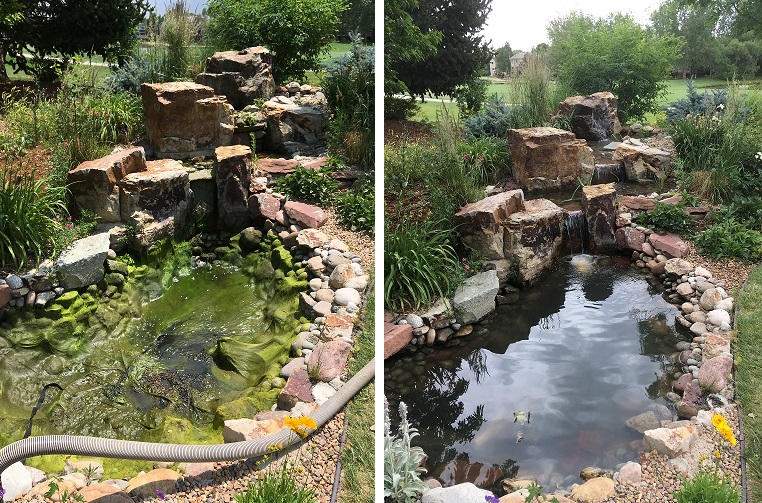
Source: Colorado Pond Pros
Seasonal Maintenance Routines for Healthy Edible Landscapes
Maintaining your herb and fruit tree landscape requires regular seasonal care. Follow these guidelines for each season:
Spring Maintenance
-
Clean-up and Pruning: Clear away debris from around the pond and prune fruit trees to foster new growth.
-
Planting: This season is ideal for planting new herbs and fruit trees.
-
Soil Care: Enrich the soil with organic compost and mulch to retain moisture and suppress weeds.
Summer Maintenance
-
Irrigation: Use efficient watering systems to ensure your plants receive enough moisture.
-
Pest Control: Keep an eye out for pests and manage them organically to protect your edible plants without harming the pond ecosystem.
Fall Maintenance
-
Harvesting: Gather the remaining fruits and herbs and consider preserving them for winter use.
-
Winter Preparation: Apply mulch around plants for protection and clear leaves and debris from the pond.
Winter Maintenance
- Pruning: Conduct winter pruning for deciduous fruit trees while avoiding damage to tender herbs.
Following these seasonal tasks will help keep your garden productive and vibrant year-round.
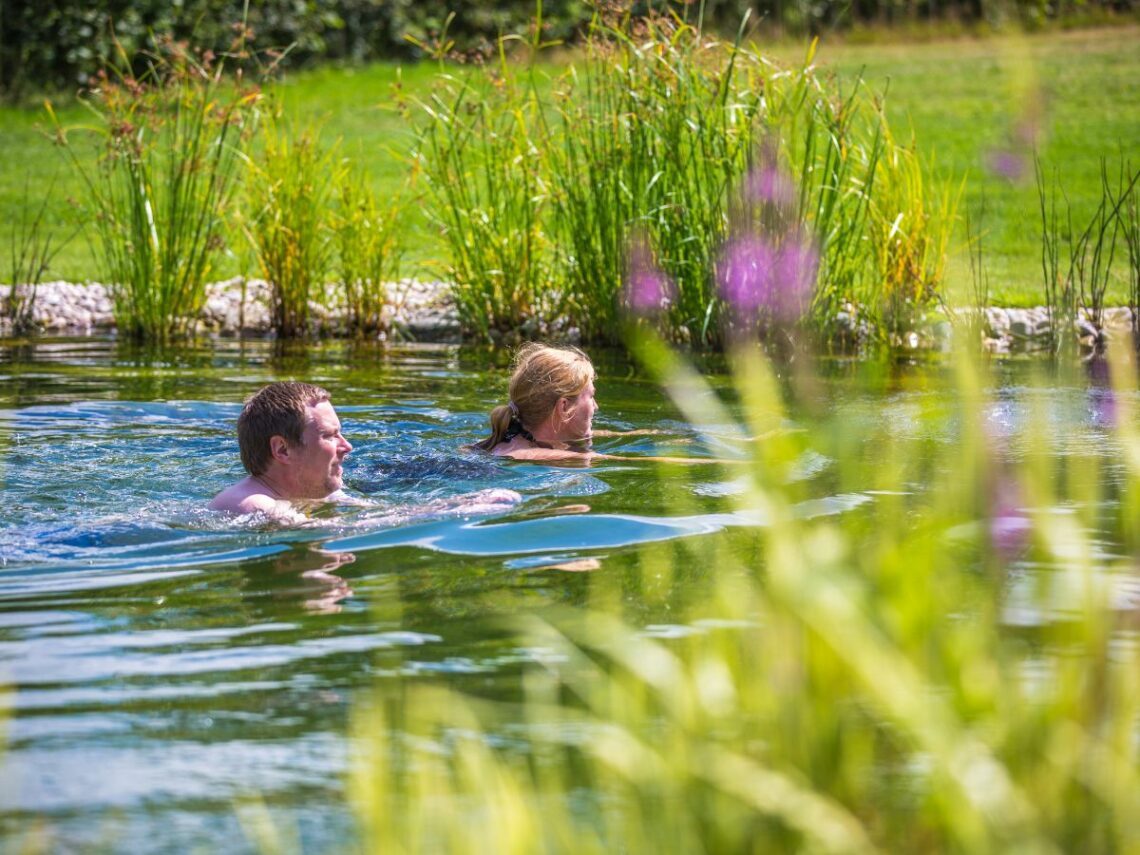
Source: Pond & Garden Design
Success Stories in Edible Garden Integration with Swim Ponds
Real-world examples of successful garden integration illustrate the benefits of blending edible gardens with natural swim ponds. Consider the following:
-
Charles’s DIY Natural Swimming Pond: After constructing a natural pond, Charles integrated a nearby vegetable garden, demonstrating how to marry aesthetics and function seamlessly.
-
Southwell, UK Garden Project: This award-winning garden features a natural swimming pool alongside an orchard and vegetable garden, effectively demonstrating how landscape use and environmental benefits can coexist.
-
Community Initiatives: Collaborative community projects have successfully combined edible gardens with swimming ponds, showing how teamwork can lead to productive and beautiful outdoor spaces.
These examples showcase a variety of techniques and plant choices that can lead to functional and visually appealing landscapes, benefiting both personal enjoyment and ecological balance.
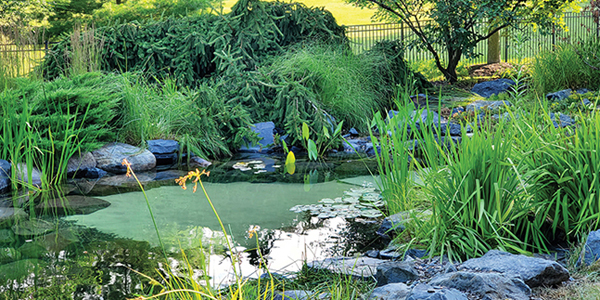
Source: Pond Trade
Conclusion
Integrating herb gardens and fruit trees around your swim pond creates a delightful combination of aesthetics and practicality. By choosing the right plants and applying smart design principles, you can cultivate a landscape that flourishes across seasons. Additionally, seasonal maintenance routines are essential for ensuring the health and productivity of your garden.
Embrace the benefits of edible plants to enhance the visual appeal of your swim pond while also supporting its ecological health. With your effort, you can create a sustainable environment that allows you to enjoy your outdoor space throughout the year. Keep in mind the promise that with careful planning and care, you can enjoy a beautiful and functional garden that nourishes both your body and spirit.
